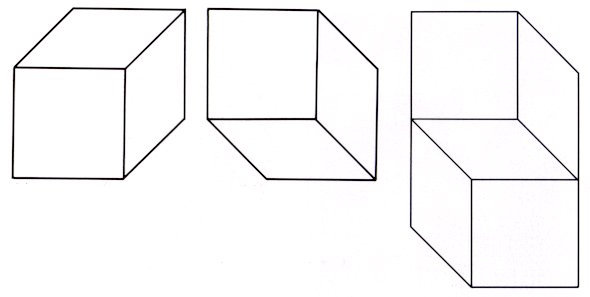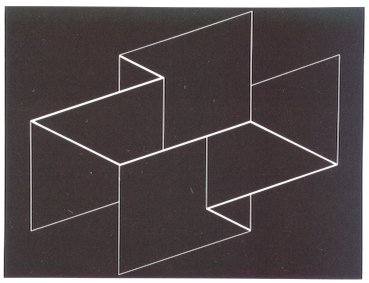|
(3) Cubic effect Sometimes there are some works which have strong cubic sense even if they are drawn on Kent paper using color paint in a KOHSEI (Basic Art & Design) in two-dimensional space. This is not solid itself; that is, there is no unevenness of the surface, however it looks like the shape of a solid having swells and hollows. This is one kind of illusion. However, such a cubic illusion relates in order for the shape to appear attractive. This is an important problem in KOHSEI (Basic Art & Design) in two-dimensional space. The details will be discussed by gathering as many examples as possible in Chapter 4, which treats the problems of illusion (page 176-190).
· Cavalier projection and military projection As I mentioned before, oblique projection is convenient in which the main shape is expressed as the condition of the real shape and measurement, one where the object is seen from diagonal upwards. (Figure 100a) is called Cavalier projection, one from diagonal downward (Figure 100b) is called military projection. In short, the point is where to put the point of
view, and the impression we from the position we view it varies. Formative
art in two-dimensional space is often used where the shape of such different
recognitions of space exist in one picture (Figs. 98,
99, 101, 102).
|

